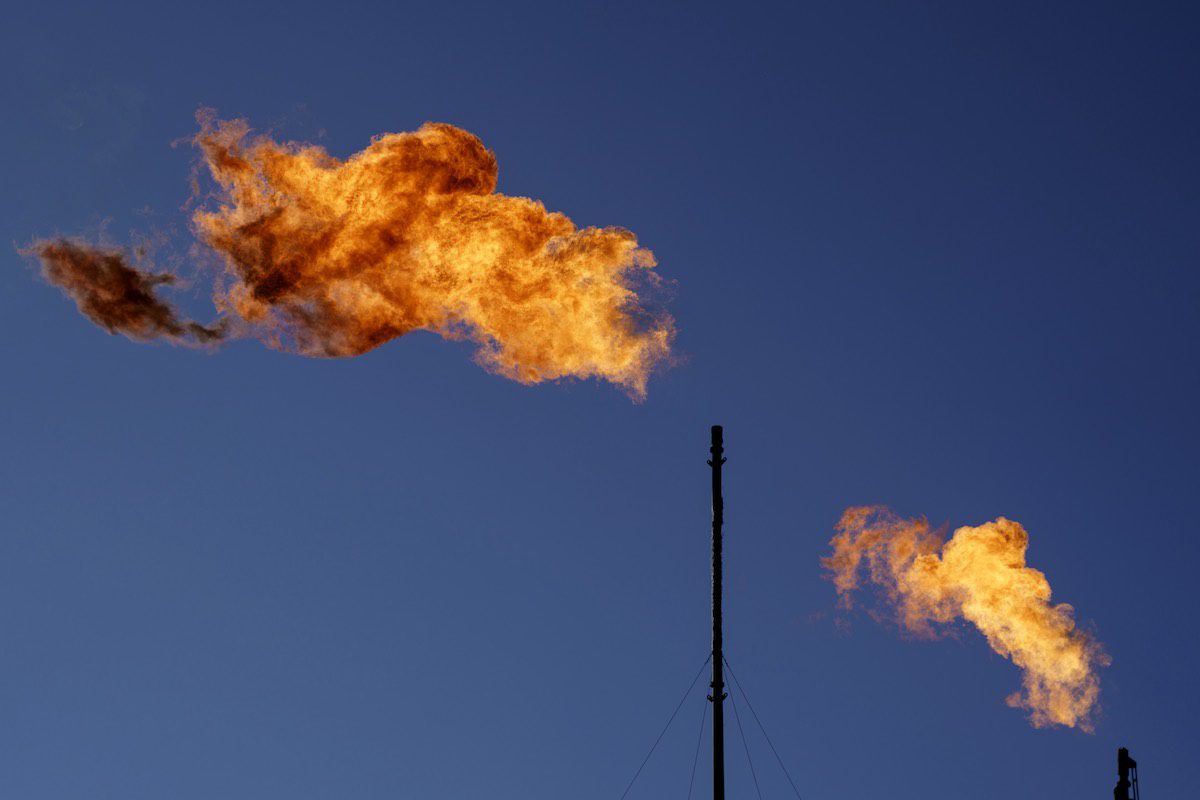A new report has found that direct methane emissions from Australian fossil fuel facilities will make up about 70% of the total emissions budget covered under the federal government’s Safeguard Mechanism, raising new questions over the integrity of the policy.
The Safeguard Mechanism requires Australia’s 215 biggest polluters to keep their Scope 1 (direct) greenhouse gas emissions below a baseline.
Under the mechanism, companies can do this by purchasing accredited carbon offsets, a loophole for which the mechanism has come under scrutiny. Of the facilities regulated by the Safeguard Mechanism, the highest polluters are all coal, oil and gas giants.
The federal government opened consultations on proposed changes to the Safeguard Mechanism in January. Debate over the mechanism is currently at a standstill in Parliament, with the Greens refusing to budge on a demand to ban new coal and gas projects from 2030.
But the sobering new report, commissioned by the Lock the Gate Alliance and authored by Emeritus Professor Ian Lowe, reveals that the mechanism is even less protective than previously understood.
The report finds that the majority of direct greenhouse gas emissions from coal mining operations covered by the mechanism are fugitive methane gas emissions, rather than CO2. A lower but still meaty proportion of the emissions from oil and gas mining are also methane.
The report comes on the back of disturbing IEA findings that methane emissions from energy production in Australia are 63% higher than federal government estimates, and amid the release this of the IPCC’s Sixth Assessment Report Synthesis.
That report finds that we’re likely to reach 1.5°C of warming in the late 2030s, and that unavoidable damage has already been done. The resounding message: fossil fuel expansion has got to stop immediately.
Methane gas is 85 times more potent than CO2 in the short term, and 25 times more potent in the long-term (on a 100-year time frame).
“Accounting responsibly for the severe short-term warming impact of methane emissions shows that coal mining is by far the biggest emitter of all heavy industries covered by the Safeguard Mechanism in Australia currently, followed by oil and gas,” says Lowe.
The International Energy Agency (IEA) says methane emissions must be slashed by 75% by 2030 to achieve net zero by 2050, and methane was a major talking point at COP26, where the Global Methane Pledge was launched.
According to the report, when methane’s twenty year global warming potential (GWP) is applied, coal mine emissions make up 43% of all emissions covered by the mechanism, rather than the 23% on a 100-year timeframe currently adopted by the Clean Energy Regulator, which governs the mechanism.
That means that the immediate impact of fossil fuel facilities is being vastly underestimated. When methane’s twenty-year GWP is taken into account, the total fossil fuel sector’s share of emissions covered under the mechanism is closer to 77%.
Lowe says a 20-year timeframe is more appropriate because the Paris Agreement is based on two emissions targets that are seven and twenty-seven years away.
Tim Buckley, energy analyst and director of think tank Climate Energy Finance, agrees.
“We have a global climate emergency that needs critical attention this decade and next. As such, applying a global warming potential assessment of 100 years (GWP100) to emissions dramatically understates the destructive cost of methane.
“We need to evaluate its global warming potential over 20 years (GWP20), as Woodside Energy, our biggest methane producer and exporter, advocates.
“The conclusion is clear, if not widely known: on a GWP20 basis, methane represents 69% of all emissions from the 215 facilities covered by the Safeguard Mechanism and over half of all Australian domestic emissions, even before acknowledging the likely significant under-reporting of methane, as reported by the International Energy Agency.”
The report also highlights a fatal flaw in the Safeguard Mechanism’s structure: under the mechanism, polluters can use carbon credits to offset their emissions – this, says Lowe, is fundamentally nonsensical, because there is no technically feasible method to draw down methane from the atmosphere, and there are no credible like-for-like offsets for methane.
“This report confirms that there are no credible offsets to compensate for methane emissions, and thus allowing any new coal mines or gas fields would be criminally irresponsible,” says Lowe. “This is brought into sharp focus by the IPCC’s latest report this week warning again that the window to avert dangerous climate change is closing.”
Federal Teal MP Zali Steggall’s proposed amendments to the mechanism are currently before parliament. They would require a cap on fugitive emission from fossil fuel facilities, and require those facilities to adhere to world-leading data collection and reporting standards – currently, most oil and gas companies report based on national averages rather than actual emissions.
Buckley is optimistic that the problem can be addressed with the right legislation.
“Methane is the elephant in the room,” he says. “But addressing much of this cost effectively is entirely doable at speed, if the right regulatory framework is established.”
Buckley points to US President Joe Biden’s recent legislation that imposes a $US1,500/tonne tax on all methane emissions above industry best practice of 0.2% methane emitted as a proportion of total oil or gas extracted, transmitted, or processed.
“Australia has signed the Global Methane Pledge,” says Buckley. “It’s time to similarly act.”










